A Complete Amazon Dropshipping Guide for 2026 in Hong Kong
- Modified: 26 December 2024
- 14 min read
- Grow Your Business, Ecommerce
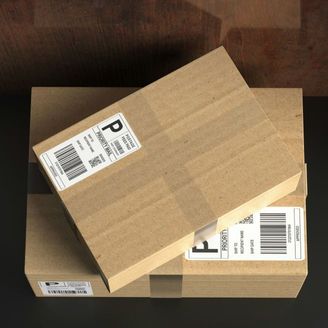

Heather Cameron
Author
Heather is here to inform and inspire our readers. Boasting eight years in the world of digital marketing, working in diverse industries like finance and travel, she has experience writing for various audiences. As Osome’s resident copywriter, Heather crafts compelling content, including expert guides, helpful accounting tips, and insights into the latest fintech trends that will help entrepreneurs, founders and small business owners in Hong Kong take their businesses to the next level.
Unlike traditional retail stores, Amazon dropshipping lets you sell products online without purchasing inventory, freeing yourself from the hassle and overhead cost of keeping a physical inventory. This guide will show you how to start your Amazon dropshipping journey, as well as its benefits, challenges, and tips for success.
Key Takeaways
- Amazon dropshipping allows entrepreneurs to sell products without holding inventory, relying on suppliers for fulfilment and shipping, making it a low-cost entry strategy.
- Success is driven by niche selection, supplier reliability, and effective marketing strategies, as well as understanding Amazon’s policies and fee structures.
- To thrive, sellers should focus on meeting customer demand and attracting customers through excellent service, accurate product listings, and by continuously adapting to market trends.
What Is Amazon Dropshipping?
Amazon dropshipping's business model allows online retail stores to outsource inventory management and shipping. Under this business model, an ecommerce store only purchases products whenever a customer places an order. The dropshipping supplier then "drops" the products at the customer's doorstep. This method eliminates the need for inventory storage and reduces upfront costs, making it an attractive option for entrepreneurs.
While the dropshipping method offers a competitive advantage against traditional ecommerce business, you must have a solid financial foundation to ensure long-term success. Ecommerce accounting services provided by Osome can help you track your revenue, expenses, and profitability, ensuring your business remains financially healthy and compliant with tax regulations. Focus on growing your online store while we do all the paperwork!
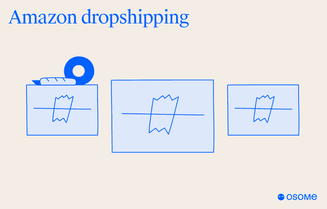
The appeal of dropshipping lies in its simplicity and low-risk nature, making online selling possible from anywhere in the world as long as there is an internet connection. Hence, sellers can access Amazon’s vast customer base and infrastructure, boosting their sales potential without significant stock investment.
Basics of the dropshipping model
Dropshipping involves three key parties: the seller, one or multiple suppliers, and the customer. Here’s how it works: when a customer places an order through a listing, the store then orders the item from third-party sellers, shipping products directly to the customer. Unlike a traditional online retailer, the seller under the dropshipping model acts as an intermediary, managing listings and ensuring a positive customer experience while the suppliers dropship products from their inventory to the customer.
One of the key advantages of dropshipping is that sellers don’t need to handle or store physical products, which keeps overhead costs low and reduces the risk of unsold inventory. However, this also means that sellers have limited control over product quality and fulfilment times, making the selection of reliable suppliers critical.
Dropshipping also offers flexibility in selling across multiple channels, allowing sellers to diversify their market reach and increase sales opportunities. This business model is particularly appealing for new entrepreneurs due to its low barriers to entry and the ability to scale quickly without significant capital investment.
Amazon's dropshipping policy
Amazon enforces strict compliance with its dropshipping policies to maintain the integrity of its marketplace. Sellers must identify themselves as the only seller of record on all external packaging and invoices when dropshipping on Amazon. This means that the seller’s name should appear on shipping labels, packing slips, and invoices, not the supplier’s. Failing to comply with these policies can lead to penalties, including account suspension.
To ensure compliance, Amazon sellers must also guarantee that products shipped through dropshipping are authentic and meet Amazon’s quality standards. This is crucial for maintaining customer trust and preserving Amazon’s marketplace reputation.
Following Amazon’s dropshipping policy helps avoid potential issues and ensures smoother, more professional business operations.
Is Amazon Dropshipping Lucrative?
The dropshipping model comes with potential profitability with minimal upfront investment. By eliminating the need for inventory storage, dropshippers can significantly reduce overhead costs. This model typically involves lower startup costs compared to other methods like Amazon FBA, making it an appealing option for new sellers. However, success in dropshipping on Amazon requires a deep understanding of cost structures, including Amazon’s referral and fulfilment fees, which can impact profit margins.
Profitability in dropshipping hinges on identifying a niche market, product sourcing, and effective marketing. While managing cash flow and expenses is crucial, the right approach can help you build a profitable dropshipping business.
5 Steps To Set Up Your Amazon Dropshipping Business
There are several key steps before you can dropship on Amazon successfully. First, conduct thorough research to identify a profitable niche and reliable suppliers. Next, set up your Amazon Seller Central account, followed by building your online store. Then, list your products with compelling descriptions and images. Finally, focus on fulfilling orders and managing customer service to ensure a smooth operation.
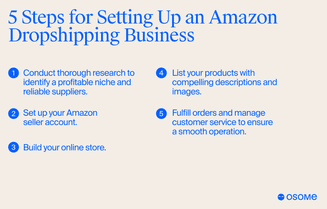
Each of these steps is crucial for establishing a solid foundation for dropshipping on Amazon. Following these steps helps navigate the complexities of dropshipping on Amazon, paving the way for a profitable ecommerce business.
Here’s a closer look at each step.
1 Conduct thorough research
Identifying a profitable niche is the cornerstone of a successful dropshipping business. Start by exploring reliable suppliers, both local and international, who offer high-quality products suitable for dropshipping.
Assess market competition, consumer trends, and pricing strategies to position your business effectively. You should also research other sellers with similar product selections to evaluate your competition.
2 Set up your Amazon seller account
Creating an Amazon seller account is the first step in dropshipping on Amazon. You’ll need to provide business details such as your name, address, and credit card information.
Choose between Individual and Professional seller accounts based on your expected sales volume. The Professional plan is ideal if you plan to sell more than 40 units a month.
3 Build your online store
Select an ecommerce platform like Shopify to create your online store. Customise your store’s appearance, layout, and navigation to provide a seamless user experience.
Connect your online store to your Amazon seller account using appropriate plugins or integrations to streamline operations.
4 List your products
Optimised listings can help attract customers. Use creative and compelling descriptions with top keywords to optimise your listings for Amazon’s search engines and add high-resolution product pictures and bulleted lists to highlight the product’s features and benefits.
5 Fulfill orders and manage customer service
Once a customer places an order, place the order with your supplier, providing the customer’s shipping address. Clear communication about product availability and shipping times helps manage customer experience. Make sure your supplier does not include their identifiers on external packaging or packing slips to stay compliant with Amazon's regulations.
Effective customer service is crucial for maintaining a positive reputation. Address customer questions and concerns promptly, particularly regarding shipment, delivery, or product quality. Implementing inventory management software can streamline order processing and reduce manual workload, especially in complex customer service scenarios. Providing excellent customer service can further enhance customer satisfaction.
How To Find Profitable Products for Amazon Dropshipping?
Finding profitable products is essential for a successful dropshipping business. Start by researching market trends to identify high-demand products. Tools like Product Opportunity Explorer can help you discover products with low competition and high demand on Amazon. Analyse customer preferences and competitor offerings to select products that align with consumer demand.
Ensure the products you select are suitable for dropshipping on Amazon, are of high quality, and offer reasonable and swift shipping. Staying attuned to market trends and customer needs allows continuous updates to your product range, keeping your Amazon store competitive and profitable.
How To Choose Reliable Dropshipping Suppliers?
Choosing a trustworthy dropshipping supplier is critical for the success of your business. Platforms like Aliexpress are popular for finding suppliers, but it’s essential to thoroughly vet them to avoid issues like botched orders and late shipments. Evaluate suppliers based on product quality, shipping times, and their reputation.
Consider ordering sample units to inspect product quality before listing them in your store. This helps predict customer satisfaction and mitigate risks associated with poor product quality.
Efficient order fulfilment by your suppliers is key to maintaining customer satisfaction and smooth operations.
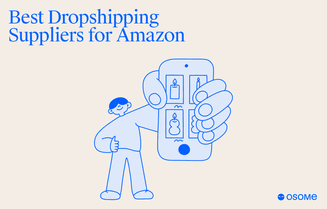
Costs associated with dropshipping
Understanding the costs associated with dropshipping is essential for maintaining profitability. Seller fees on Amazon vary by product category, typically ranging from 10% to 15%. Professional sellers incur referral fees that range from 8% to 15%, depending on the category. Additionally, closing fees and high-volume listing fees should be considered.
For those using the Professional selling plan, there is a monthly subscription fee of $39.99, while the Individual plan charges $0.99 per unit sold. It’s crucial to factor in all these fees and expenses to maintain a desirable profit margin.
Profit margins and pricing strategies
Profit margins in dropshipping are defined as the difference between your listed price and supplier costs. Typically, dropshipping sellers experience profit margins ranging from 5% to 40%, with an average of 10% to 30%. Factors influencing profitability include product sourcing, selling price, and Amazon fees. Essentially, dropshipping follows the same mechanism as retail arbitrage without exploiting the market as the latter does.
To maintain healthy profit margins, sellers must continuously adjust product offerings and pricing strategies in response to market demand and competition. Staying flexible and adapting to changes helps maximise profit potential and maintain a competitive edge.
Marketing Your Amazon Dropshipping Products
Effective marketing is crucial for driving traffic to your listings and increasing sales. Building a strong brand image can differentiate your products in a competitive dropshipping landscape. Utilising marketing methods like Amazon Sponsored Products campaigns and social media promotion can significantly enhance product visibility.
Keyword research is another essential tool for improving product visibility in Amazon’s search results. Understanding shopper queries helps optimise your listings, attracting more customers and boosting sales.
Tracking key performance indicators (KPIs) like conversion rates and customer feedback can help assess the effectiveness of your marketing strategies.
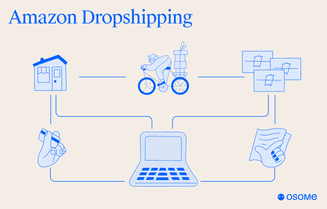
Utilising Amazon PPC
Amazon’s Pay-Per-Click (PPC) advertising is a powerful tool for increasing visibility in search results. A successful PPC campaign requires a careful selection of keywords to target potential customers effectively.
Investing in PPC drives more traffic to your listings, boosting Amazon sales.
Leveraging social media platforms
Social media platforms offer a vast audience for promoting your products. Sharing engaging content and promoting your products through social media creates buzz and increases visibility.
Building a community around your brand on social media can lead to better customer loyalty and repeat business.
Building a brand
A strong brand identity differentiates your products in a competitive online marketplace. Offer memorable customer experiences, create a visually appealing website, and work with suppliers to ensure product quality.
Consistent customer service and engagement with your target audience are key strategies for fostering brand loyalty and attracting repeat customers.
Common Challenges and Solutions
Dropshipping comes with its own set of challenges, including high competition and limitations in managing suppliers and fulfilment processes. To succeed, sellers must carefully manage their business to mitigate issues such as supplier reliability and order fulfilment. Identifying profitable niches, focusing on branding, and providing exceptional customer service help improve profit margins and distinguish your products in the marketplace.
There are no guaranteed earnings in dropshipping, so it’s important to stay adaptable and continuously seek ways to optimise your operations. Addressing common challenges head-on helps navigate the complexities of dropshipping and build a sustainable business.
Dealing with supplier issues
Reliable suppliers are critical for your success because the dropshipping supplier directly impacts product availability and quality. Inconsistent product quality can lead to customer dissatisfaction, resulting in negative reviews and processing customer returns.
Maintain supplier quality by establishing clear communication and regularly evaluating their performances.
Managing customer expectations
Setting realistic expectations helps prevent misunderstandings between you and your customers. Clearly communicate shipping times, product availability, and potential delays. Using automated order confirmation emails and providing real-time tracking updates can keep customers informed and satisfied.
Offering a clear return and refund policy can also alleviate concerns and reassure customers.
Navigating competition
Thorough market research helps identify less saturated niches, improving your chances of success in a competitive environment. Securing the Buy Box involves competitive pricing and maintaining a positive seller rating, which can attract more customers and boost sales.
Alternatives to Amazon Dropshipping
There are alternatives to dropship on Amazon. Fulfilment by Amazon (FBA) involves Amazon handling storage, packaging, and shipping, offering faster shipping and customer service support. However, FBA requires the purchase and sending of inventory to Amazon, which comes with storage fees. Dropshipping, on the other hand, allows lower upfront costs and no inventory risk but may result in longer shipping times and less control over fulfilment.
Starting your own online business store is another alternative, offering more control over customer service and marketing. This option can improve profit margins as there are no third-party fees, and it allows you to build a unique brand identity.
Amazon FBA vs. dropshipping
Amazon FBA and dropshipping are both fulfilment models that enable selling products without holding inventory. FBA involves storage, packaging, and shipping handled by Amazon, offering faster shipping and customer service support, but it comes with storage fees. Dropshipping allows for lower upfront costs and no inventory risk, making it a more flexible option for new sellers.
The main differences are control and cost. FBA offers greater control over fulfilment and faster shipping times, while the latter provides flexibility and lower initial investment requirements. Choosing the right model depends on your business goals and resources.
Print-on-demand dropshipping
Print-on-demand dropshipping involves selling customised products that are created and shipped by suppliers after a sale is made. This model allows for unique product offerings without the need for inventory, similar to traditional dropshipping. However, ensuring consistent product quality from suppliers can be challenging.
Print-on-demand dropshipping is ideal for businesses looking to offer personalised products, such as custom apparel or accessories. This model can differentiate your store from competitors and attract a niche audience interested in unique, customised items.
Additional Tips for Amazon Dropshipping Business
Several important tips to add to your dropshipping strategy are expanding your product range and working with additional suppliers can grow your Amazon store quickly. Utilise tools like Google Trends and social media to identify emerging market trends and gather customer feedback to uncover potential product demands. Regularly monitor sales performance and collect customer feedback to make data-driven decisions about which products to keep, discontinue, or expand.
Automating various processes can help manage increased order volume efficiently as your business grows. Use integration apps and software tools to streamline order fulfilment, provide tracking information, and sync product inventory.
Continuously monitor performance metrics and utilise effective marketing strategies to drive traffic to your listings and maintain competitiveness.
Expand product range
Utilise tools like Google Trends and social media to identify emerging market trends and gather customer feedback to uncover potential product demands. Regularly monitor sales performance and collect customer feedback to make data-driven decisions about which products to keep, discontinue, or expand.
Automate processes
Automating various processes can help manage increased order volume efficiently as your business grows. Use integration apps and software tools to streamline order fulfilment, provide tracking information, and sync product inventory.
Monitor performance metrics
Key performance indicators (KPIs) are metrics used to measure the success and efficiency of your dropshipping business on Amazon. Track common KPIs such as sales volume, profit margins, customer acquisition cost, and return on investment to gauge business performance and make informed decisions.
Utilise marketing tools
Employ effective marketing strategies, including social media advertising, email marketing, and SEO, to drive traffic to your Amazon listings. Utilising these tools can enhance your product visibility and attract more customers, leading to increased sales and growth.
Stay updated
Keep track of Amazon’s policies, regulations, and algorithm changes to ensure your business remains compliant and competitive. Staying informed about industry trends and updates can help you adapt quickly.
Navigating the financial complexities of Amazon dropshipping can be challenging. Osome offers specialised ecommerce accounting services to ensure your business remains compliant and profitable. Our team of experts will provide you with the insights and support you need to dropship on Amazon with success. Contact us today to learn more!
Summary
Amazon dropshipping offers a low-risk, high-reward business model that is particularly appealing in the dynamic market of Hong Kong. By understanding the basics, setting up your business correctly, finding profitable products, choosing reliable suppliers, and implementing effective marketing strategies, you can build a successful dropshipping business. Overcoming challenges and staying adaptable are key to long-term success.






